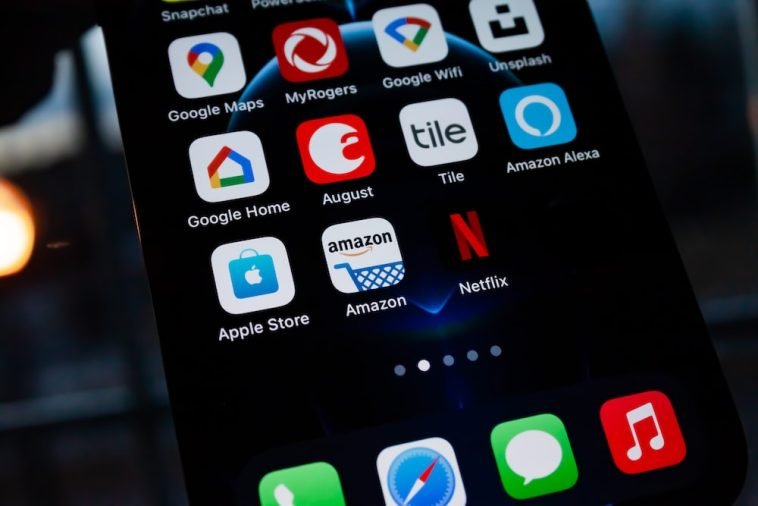Introduction.
Running an Amazon store is an exciting journey, but it’s not enough just to set it up and hope customers will find you.
With millions of sellers on Amazon, you’ve got to put in the work to stand out. Whether you’re selling homemade crafts, electronics, or anything in between, promoting your Amazon store is crucial to growing your business and reaching more customers.
You might be wondering how you can rise above the competition without spending a ton on ads or getting lost in a sea of other sellers. Good news — there are plenty of ways to get your Amazon store noticed that don’t break the bank.
In this guide, I’m going to walk you through the best strategies to promote your Amazon store, boost your sales, and get the attention your products deserve.
Why Promoting Your Amazon Store is So Important
First off, let’s address the big question: why does promotion even matter? It’s simple. Amazon is a giant marketplace with millions of active sellers.
As of 2024, Amazon has more than 2.5 million active sellers worldwide, which means that competition is fierce. Without promotion, your store is essentially invisible among all those other sellers.
But promoting your Amazon store isn’t just about getting your products in front of more people — it’s about targeting the right people. You want to attract customers who are genuinely interested in what you’re selling and convert those views into sales.
And there’s good news: Amazon offers a range of tools and strategies to help you do this effectively. From organic methods to paid campaigns, there are plenty of ways to drive traffic to your store without feeling overwhelmed.
How Do I Promote My Amazon Store?
1. Optimize Your Amazon Listings.
Before you dive into external promotion, the first step is to make sure your Amazon listings are fully optimized. This means making your product pages as attractive and informative as possible. Here’s what to focus on:
Product Title
Your product title is one of the first things shoppers see, and it plays a huge role in helping Amazon’s search engine rank your product. Make sure your title is clear, includes key product details, and is easily searchable. For example, if you’re selling a “reusable water bottle,” make sure your title includes terms like “eco-friendly,” “BPA-free,” and “durable.”
Bullet Points and Description
The bullet points and product description give you the chance to explain what makes your product stand out. Include relevant features, benefits, and any other details that could help a customer make a buying decision. Don’t forget to mention keywords that customers are likely to search for.
Product Images
High-quality images are a must. Make sure your product photos show different angles, close-ups, and features of the product. If possible, include lifestyle images showing your product in use. It gives customers a better idea of how it fits into their lives and can help build trust.
Pricing
Competitive pricing is a huge factor in getting noticed on Amazon. While you don’t always have to be the cheapest, it’s important to keep your price in line with the competition. Consider offering deals or discounts to encourage purchases.
Reviews
Customer reviews are essential on Amazon. A product with more positive reviews tends to rank higher in search results, so it’s important to ask satisfied customers for feedback. Just make sure you follow Amazon’s guidelines on reviews, and never offer incentives in exchange for positive reviews.
2. Use Amazon Advertising.
Amazon offers a variety of advertising options to help sellers promote their products directly on the platform. Here’s a breakdown of the main types of ads:
Sponsored Products
Sponsored Products are the most common ad format on Amazon. These ads appear in search results or product detail pages, and they target specific keywords that are relevant to your products. You pay only when a customer clicks on your ad, making it a cost-effective way to promote your products.
Sponsored Brands
If you have a larger range of products, Sponsored Brands ads are a great way to show off multiple items in one go. These ads feature your brand logo and a custom headline, and they appear at the top of search results. Sponsored Brands can increase your visibility and help customers explore your entire product line.
Sponsored Display Ads
These ads allow you to retarget customers who’ve viewed your products or similar products but haven’t made a purchase yet. Retargeting is one of the most powerful ways to turn interest into sales.
Amazon DSP (Demand Side Platform)
For larger sellers, Amazon DSP allows you to programmatically purchase display and video ads both on and off Amazon. This is a more advanced option but can be highly effective for brand awareness and large-scale campaigns.
3. Leverage Social Media.
Social media is one of the most powerful tools for driving traffic to your Amazon store. Here’s how you can use it:
Instagram is perfect for product-driven stores, especially if you can create engaging, visually appealing content. Share high-quality images of your products, run giveaways, and use relevant hashtags to increase your reach. You can also use Instagram Stories or Reels to show behind-the-scenes content or product demos.
Facebook allows you to create targeted ads that can drive traffic to your Amazon listings. You can use Facebook’s detailed audience targeting to reach people who are likely to be interested in your products.
If you sell products that are visually appealing (like home decor, fashion, or beauty items), Pinterest is a great place to promote your store. Pinterest pins are often used as a shopping tool, so make sure your pins link directly to your Amazon product pages.
TikTok
TikTok is one of the fastest-growing social media platforms, especially with younger audiences. Use short, creative videos to showcase your products in action. If you can tap into trends or create something fun and shareable, you can easily go viral.
4. Utilize Amazon’s Brand Registry.
If you have your brand, signing up for Amazon’s Brand Registry program can give you extra tools to promote and protect your store. Brand Registry allows you to:
- Control your product listings to ensure accuracy and prevent counterfeit products.
- Access A+ Content (Enhanced Brand Content), which lets you add richer product descriptions, images, and videos.
- Gain access to better analytics to track your product’s performance.
- Use Amazon Stores, which lets you create a customized, branded storefront on Amazon.
5. Run Promotions and Deals.
Running promotions, discounts, and special offers is an easy way to drive traffic and increase sales on Amazon. Here are some options:
Lightning Deals
These are time-sensitive promotions that offer a discount for a limited period, and they appear in the “Today’s Deals” section on Amazon. They can be a great way to boost sales and get your products noticed.
Coupons
Coupons can be a great way to offer discounts to customers. You can display these on your product listings, and shoppers will see them as they browse.
Amazon Prime Day & Black Friday
Don’t miss out on big shopping events like Amazon Prime Day and Black Friday. These events are massive sales opportunities, and promoting your store during these times can significantly increase visibility.
6. Use Influencer Marketing.
Collaborating with influencers is a great way to build credibility and promote your Amazon store. Influencers have dedicated followings that trust their recommendations.
You can work with influencers in your niche to showcase your products and send traffic to your Amazon store.
7. Build Your Email List.
Building an email list outside of Amazon can help you keep customers engaged and promote your store.
You can collect emails through your website, social media, or promotions, and then use email marketing to remind customers of your products, send special offers, or launch new items.
8. Improve Your Amazon SEO.
Amazon uses a search algorithm called A9, which determines how products are ranked on the platform. Here are some tips to improve your Amazon SEO:
- Keywords: Make sure your product listings include relevant keywords that shoppers are likely to search for.
- Backend Search Terms: These are hidden keywords that Amazon uses to index your product listings. Make sure to use all available space to include additional relevant keywords.
- Sales History and Reviews: Amazon’s algorithm tends to favor products with strong sales and positive reviews, so focus on getting reviews and boosting your sales volume.
Conclusion
Promoting your Amazon store is all about getting your products in front of the right customers at the right time.
By optimizing your listings, using Amazon’s advertising options, leveraging social media, and running promotions, you can increase visibility and drive more sales.
Now, here’s the big question: What strategy are you most excited to try first to promote your Amazon store?





GIPHY App Key not set. Please check settings